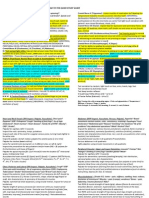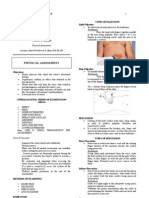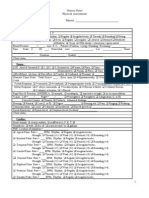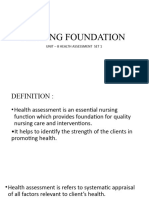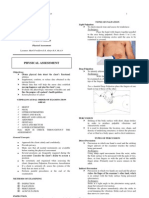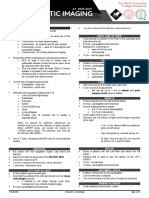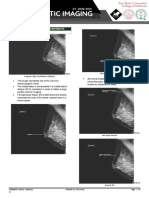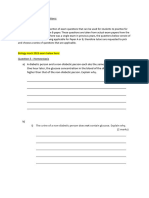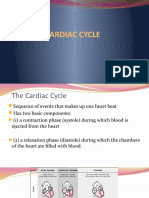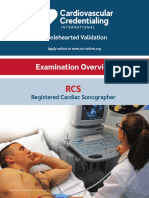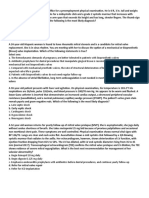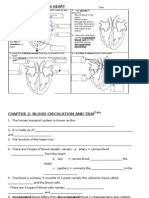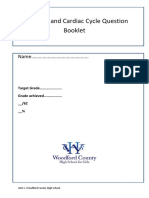Gather General Data information.
The Data Base
1.
Personal Data
2.
Chief Complaint =
dont use the words: Good or Bad, Well, or
Normal
Instead describe why you think its normal, good,
or bad!
3.
Past Health History = the past health problems,
treatments, & outcomes.
A. Surgical history..type & date of surgery.
4 Methods (Techniques) of Physical Assessment
B. Medical Illnesses
4. Family History=
5. Allergies =
6. Current Meds
7. Prosthesis= Pacemaker, Hearing Aid, Dentures,
False Eye, False Limb
8. ADLS @ home.hygiene, bladder & bowel
elimination, hygiene, activity level, diet habits.
9. Health Practices
10. Lifestyle Habits
1. Inspection = Purposeful Observation
Looking for
See Figure 12.1A; pg.186
Inspect from
2. Percussion = striking or tapping a part of the body &
listening for the sound it makes.
Mostly done
See Table 12.1B; pg. 186
3. Palpation = lightly touching or applying pressure
See Figure 12-2
Noting the size, shape, mobility, pain of masses &/or
normal tissue
4. Auscultation = listening to body sounds with or
without a stethoscope. What type of sounds would you
auscultate?
Vital Signs: Must be taken
Height/Weight: Always take the pts weight on the
hospital scale
1.
Compare the weight with
2.
Determine if
(2) APPROACHES TO A PHYSICAL ASSESSMENT
1. Head to Toe Approach
*2. Body Systems Approach
I. Mental Status
Pts Mood
Before you begin your assessment, ask the pt how
he/she feels?
Note any Signs & Symptoms = warning that
something is wrong.
A.
sign=
B.
symptom =
C.
local sign=
D. systemic sign = one thats produced by the effect
of disease on the whole body
Does the pt c/o any pain or discomfort? Where?
How much pain?
use
Pts Facial Expression
Pts Ability to Verbally Communicate
Pts Intellectual Ability
1.
2.
3.
Note pts Appearance, Hygiene, Speech, & Behavior
II. Neurological System
Level of Consciousness
Make your assessment give a mental picture of the
patient:
dont use critical or judgmental words
Level of Orientation (oriented X 3)
Oriented to person
Assessment Lecture
Page 1 of 4
�Place
Time/date
Pupillary Reaction
1. Consensual Response = both pupils respond to light
(when shining light in 1 eye)
2. Accommodation = pupils constrict with near
objects
pupils dilate with
far objects
Jaundice (yellow) = liver problems (seen also in eyes,
& urine)
Tan (brown) = ethnic race, sun exposure
Appearance of the Eye:
2.
Appearance of Drainage
Serous = clear
= bloody
= blood + serous
Mucoid = Mucous
Purulent = Contains Pus
Skin Temp (Warmth)
Warm, cool, or cold- to touch.
Wet or Dry
Skin should be
Check if skin is slightly moist?
Does pt have excessive perspiration =
Pupils should be equal. Note size & Shape of Pupils!
Any Lesions = change in the integrity of the skin.
Size of Pupil? [Figure 12-93mm, 4mm, etc]
1. Wound
2. Ulcer
3. Abrasion
4. Laceration
PERRLA =Pupils Equally Round & Reactive to Light & 5. Fissure
6. Scar
Accommodation
If , report to nurse.
Note the LOCATION--SIZESHAPEDRAINAGE of
ALL WOUNDS
Strength of Hand Grasp:
Location:
Ask pt to squeeze hands
Left upper arm
Note if
Right lower leg
Size:
III. Sensory Perceptual
1 in.; 2in, etc
Functional Ability of the Sense Organs: (eyes, ears)
1cm, 2cm, etc
Appearance of the Sense Organs
Dime-size; Quarter-size; Half-dollar size
Shape:
Eyes:
Round, crescent or quarter-moon shaped; rectangular;
Functional Ability = Visual acuity, is he blind in either
eye? Does pt wear glasses,
Drainage:
1.
Amount
Scant Moderate Profuse
Ears:
Functional Ability:
How is his hearing in each ear? any use of hearing
aids??
Appearance of the Ear:
Any ear pain?
IV. Integumentary Assessment
Skin Turgor = the elasticity of the skin ..Pinch the skin &
see how quickly it returns.
1.
immediate return = good hydration
2.
(slow) return = dehydration
example = tented for 8 seconds
Color of Skin or Mucous Membranes
Uniform Color/ Ethnic Race
Edema = excessive amt of fluid trapped within tissue
(pink) skin or mucous membranes
1. Location: Pretibial (lower leg), ankle, or foot
Diagnostic Skin Color Variations
a. press area for 5 secs
Flushed
=
b. grade
= superficial burns
1+ = 2 mm
Ecchymosis(purple) = trauma to soft tissue (bruise) 2+ = 4 mm
= bluish, low tissue oxygenation
3+ = 6 mm (size of common pencil eraser)
= RBCs , blood loss, anemia 4+ = 8 mm
----------------------------------------------
Assessment Lecture
Page 2 of 4
�non-pitting > 4+ = Brawny Edema
Lub
Dub
V. Respiratory System
Respiratory Rate & Effort?
*S1 = closure of the A V valves
S2= closure of the Aortic & Pulmonic Valves
Lung Sounds
1. Normal Lung Sounds
area of the lung, type of sound, length of sound
Insp.
Expir.
a. Tracheal
_____ _____
b. Bronchial
__ _______
c. Bronchovesicular _____ _____
*d. Vesicular
________ __
* Listen over the anterior and posterior chest of the
patient.
*For most of the chest area, you will hear Vesicular
sounds
(long inspirations---short
expirations)
* Document if lung sounds are clear anteriorly,
posteriorly, and bilaterally
2. Abnormal Lung Sounds = Adventitious
Sounds
Caused by air moving thru secretions or
narrowed airways
a. Crackles = rales (in periphery on
inspiration)
b.
c.
d. Rubs = Loud grating sound (over inflamed areas)
Abnormal Heart Sounds = galloping sounds
S3= indicates heart failure in adults
Is
S1 S2 S3
Lub-dub-dub
Cough (productive or nonproductive)
If productivenote the following:
a. color =
b. amount =
c. consistency =
VI. CARDIOVASCULAR SYSTEM
Auscultate the Apical Heart Sounds = caused by
closure of the 4 heart valves.
The A-V Valves
Semilunar Valves
1
1. Aortic
2.
2. Pulmonic
Normal Heart Sounds:
S1*
S4 = means coronary artery disease, hypertension, etc.
S4 S1 S2
Lub-lub-dub
Murmur =
Palpate the Peripheral Pulses
Is pulse present?
Start at most
What is quality of pulse?
Check Capillary Refill Time
color should return in < 3 seconds
if > 3 secs. = circulation problems
Does pt c/o chest pain?
VII. GASTROINTESTINAL SYSTEM
Mouth
Abdomen
Auscultate bowel sounds
Divide abdomen in
Best heard in RLQ
Describe bowel sounds as:
1.
2.
3.
Palpate abdomen & note:
1.
soft & flat
The 2.
hard & distended
Describe any Stools during your shift.
Is pt continent or incontinent?
If no stools on your shift, when was last BM?
What is pts usual bowel pattern?
Does pt have a colostomy/ileostomy? Describe stool.
Hemorrhoids?
S2
Assessment Lecture
Page 3 of 4
�VIII. GENITOURINARY SYSTEM
Palpate the lower abdomen
the
if bladder is palpable
IX. MUSCULOSKELETAL SYSTEM
Does pt have a Foley Cath?
or
Is pt urinating continently?
1. Describe urine
a.
b.
c.
2. Note any difficulty with urination
a. burning
frequency
Muscle Strength? = power to perform
Push against the pts foot or hand while he
resists.
(figure 12.23; pg 200)
Any atrophy? = wasting away of muscle
b.
If incontinent?.......how many times were attends
checked & changed?
Any perineal lesions?
Walking Ability or transfer ability?
Joint Mobility Range of Motion of the Joint?
Full Range of Motion =
Limited Range of Motion =
Muscle or Joint pain?
Assessment Lecture
Page 4 of 4









